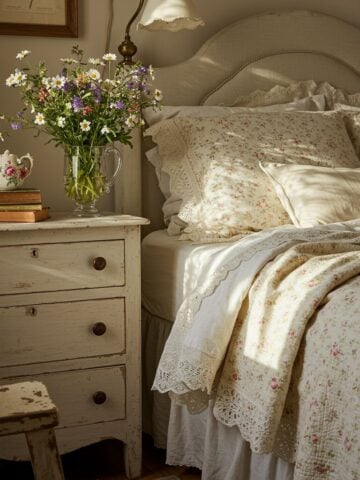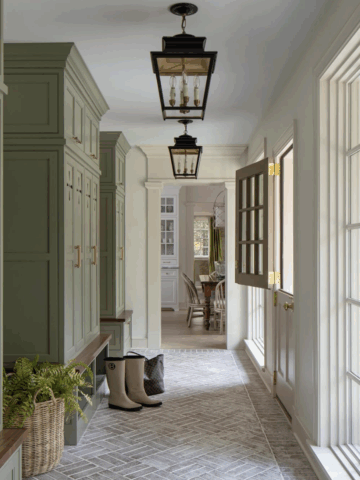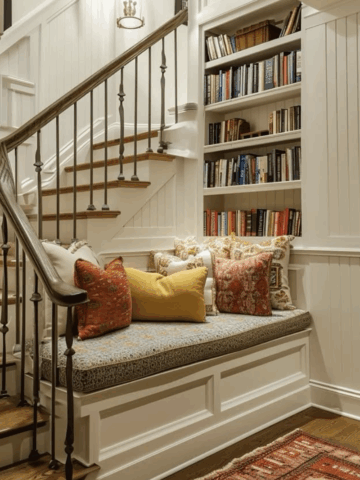
There’s something about walking into a space filled with soft, natural light that makes everything feel calmer and more lived-in. Whether you’re working with large windows or just a little light peeking through, there are ways to make the most of it. The key is designing with light in mind from the start.
Start by Understanding How Light Moves Through Your Home
Disclaimer: this post may contain affiliate links, and every purchase made through these links will give me a small commission (at absolutely no extra cost for you!) AS AN AMAZON ASSOCIATE AND REWARDSTYLE MEMBER, I EARN FROM QUALIFYING PURCHASES. See Privacy Policy for additional info.
Natural light doesn’t reach every space in the same way. Some rooms get a soft morning glow, while others feel warmer as the afternoon sun filters in. Paying attention to these patterns helps you make smarter design decisions, even before you choose paint or furniture.
Try walking through your home at different times of day and noticing which corners feel bright and which ones stay in shadow. Even if you don’t get direct sun, you can still highlight the light you do have with thoughtful design choices.
Use Paint Colors That Reflect, Not Compete With, the Light
Color can either support or mute the light in a room. Soft, muted tones tend to reflect natural light well, creating a sense of airiness without feeling cold. Bright white isn’t always the answer. Sometimes warmer creams, gentle beiges, or cool-toned pastels do a better job of softening the light and balancing the overall mood.
The finish matters too. Matte walls absorb light, while an eggshell or satin finish gently bounces it back into the room. Before committing to a color, look at paint swatches at different times of day. What feels fresh in the morning might turn dull by afternoon, depending on how the light moves through your space.
If you’ve adjusted your palette and things still feel dim, the solution may lie in your windows and doors.
Bigger Impact Comes From Smarter Openings
Paint can help reflect light, but it can’t increase the amount of light entering a room. That’s where windows and doors make a real difference. Even small changes like taller windows, glass door inserts, or transom windows can help bring in more daylight.
Upgrading doesn’t always mean adding new openings. Sometimes, rethinking how existing ones are used is enough. A wider interior doorway, for example, can let light flow between rooms more easily.
If cosmetic changes aren’t cutting it, it may be time to consider structural upgrades. Thoughtful solutions like Andersen doors and windows can bring in more natural light while helping your home feel brighter and more comfortable throughout the year.
These updates don’t have to be dramatic to be meaningful.
Keep Window Treatments Light and Uncomplicated
How you dress your windows plays a big role in how much light enters the room. Heavy curtains or dark blinds tend to absorb more light than they let through, even when open. Lighter fabrics like linen or sheer cotton can let in more light while still offering privacy.
Mounting curtain rods slightly higher and wider than the window frame lets more light in from the sides, making the window feel larger overall. If you use shades or blinds, choose styles that roll or fold up neatly so they don’t block any part of the window when not in use.
Simple adjustments like these give your windows room to do what they’re meant to do: let the outside in.
Let Light Move Freely With Your Layout
A room’s layout affects how light moves just as much as its windows do. Large furniture placed too close to windows can block or absorb light. Tall shelves or deep sofas along exterior walls often create unintended shadows.
Try floating furniture slightly away from windows or rearranging seating to create more open sightlines. Even moving a chair a foot to the left can change how the light travels through a space.
Mirrors can help here, too. Positioned across from a window, they reflect light into shadowed corners. Glass accents, pale floors, and light-reflecting surfaces can quietly brighten a space without changing its core design.
Many of the most livable rooms rely on layouts that support both style and brightness. If you're working toward a space that feels timeless and open, these interior design trends offer classic ideas that hold up year after year.
Think About Light When Planning Future Projects
When designing a renovation or new build, natural light should be part of the early planning, not an afterthought. It affects everything from how a room looks to how comfortable it feels once you're living in it.
Some rooms might not need as much light based on how you use them, while high-traffic areas like kitchens, entryways, and living rooms benefit from more openness and brightness. Small changes like raising a window a few inches or placing it higher on the wall can transform how a space functions.
Some homeowners use daylighting strategies to guide choices like window placement, wall height, and orientation based on the sun’s path. These decisions don’t need to be complicated, but thinking about them early can lead to a home that feels better every day.
The Feel of a Room Matters as Much as the Look
The way a space feels often has more impact than how it looks. Natural light shifts with the time of day and season, adding warmth and rhythm that artificial lighting can’t always replicate.
A soft stream of morning light in the kitchen or golden evening sun in the living room adds personality and comfort to everyday routines. These are the kinds of details that quietly shape how we feel at home in a space.
Designing with light is less about perfection and more about creating rooms that feel welcoming, easy, and lived-in, whether you're entertaining or just having a quiet afternoon.
Final Thoughts
Natural light can completely transform a home, often in ways that go unnoticed at first glance. You don’t need a major renovation to enjoy it more — sometimes, it’s about the small choices: a better layout, lighter paint, or simpler window treatments.
Every home has its own lighting rhythm. Once you start to notice it, you can begin designing with it, making your space feel more open, more comfortable, and more yours.









Leave a Reply